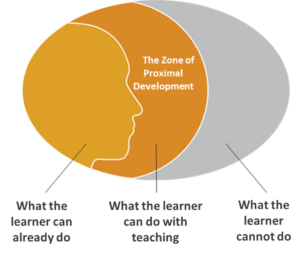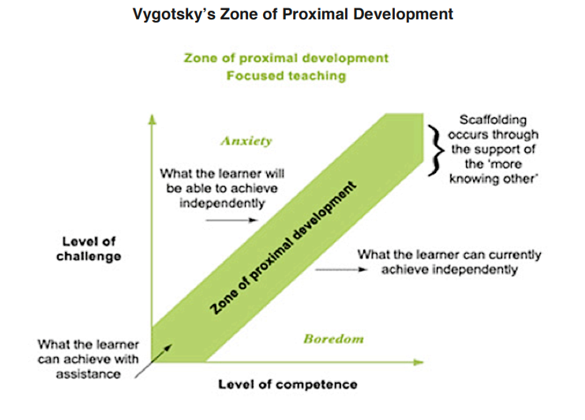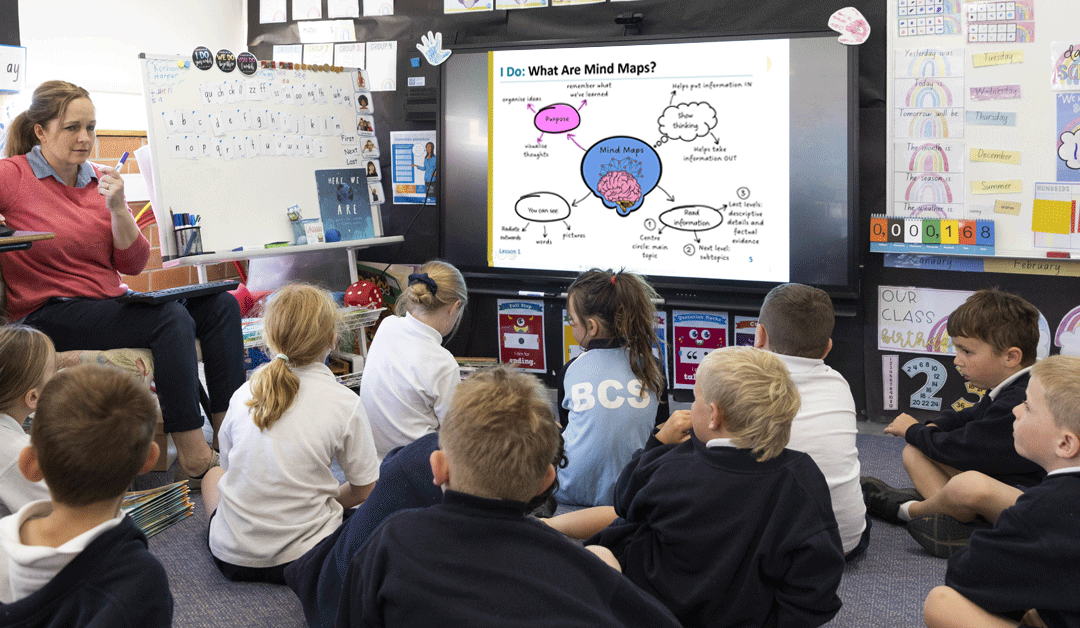
by Noel Pearson
Founder and Director, Good to Great Schools Australia
It’s hard to think of two more diametrically opposed figures in educational theory than Russian psychologist Lev Vygotsky [1896-1934] and the American developer of Direct Instruction Siegfried Engelmann [1931-2019].
The first is the prophet of the social constructivists of the 100 years war between educational progressives espousing so-called ‘child-centred’ teaching, and the second is the leading theorist of ‘teacher-led instruction’, whose unapologetic motto was: ‘If the student has not learned, the teacher has not taught’.

Lev Vygotsky
Siegfried Engelmann
Can you believe these pedagogues shared common ground?
The common ground was Vygotsky’s central insight on the Zone of Proximal Development: the recognition that learners have a zone between what they can already do and what they cannot do.
This is Good to Great Schools Australia’s representation of the Zone of Proximal Development:

In 2015, Engelmann wrote a short article, ‘Teaching within the Zone of Proximal Development,’ which he posted on his website, which is still extant (www.zigsite.com). He wrote, ‘the notion of sequencing material that is to be taught within the learner’s zone of proximal development applies to any complex skills that are to be taught’. He went on: ‘In other words, everything that is to be taught in schools should be within the zone of proximal development of all learners who are properly placed.’
This diagram is reproduced in Engelmann’s article:

Engelmann refers to this as ‘focused teaching’: teaching that is focused on the Zone of Proximal Development of learners. This is what should be meant by ‘targeted teaching’, the concept proposed by the Grattan Institute in a report frequently cited in Australian discussions about teaching (Grattan, 2015). We will explore the relevance of the Zone of Proximal Development and Engelmann’s Direct Instruction in another post on targeted teaching.
For present purposes, let’s focus on two aspects of teaching within the Zone of Proximal Development.
Firstly, there must be a method for ascertaining the Zone of Proximal Development of the learner. This is the function of Placement Tests in Direct Instruction programs: they enable teachers to place learners precisely in the right zone. The placement tests are administered to students prior to them commencing the programs. The outcomes of these tests determine where in the program students should be placed so that they are able to succeed from their first lesson. The tests are built into every program and are a failsafe means of placing learners in the right place in a program’s learning sequence.
Placement tests are administered in the planning phase of implementing Direct Instruction in a school, enabling teaching staff to allocate students to appropriate groups where the lessons are suitable to their Zone of Proximal Development. No program is more systematic and accurate in ascertaining the Zone of Proximal Development of learners.
Zone of Proximal Development teaching and learning is the goal. Placement Tests are the method.
Secondly, the challenge in classroom settings is to teach within the Zone of Proximal Development of a group of learners, not just an individual learner. It is all very well to talk about ‘targeted teaching’. But how do you do it? Particularly when you have students in year levels whose Zones of Proximal Development are at different stages of learning sequences? The logistical and time management challenges in providing ‘targeted teaching’ to a diverse classroom of students make this a nice aspiration that is near impossible to implement in practice.
Direct Instruction has the answer to this as well. In a Direct Instruction implementation, students are placed into groups with students who are within the same proximate zone as themselves. Higher progress groups are placed at their appropriate place in the learning sequence, while middle and lower progress groups are placed at their appropriate places.
Through regular mastery tests conducted every five lessons, the progress data of individual learners is monitored. Individuals can be reallocated to higher and lower progress groups according to the performance data.
We will discuss ‘ability’ grouping in Direct Instruction in another post.
Suffice to say that this grouping strategy with Direct Instruction programs enables teaching to the Zone of Proximal Development of all learners.
It means learners experience learning success from the very first lesson because the teaching is pitched just in front of them. And the next lesson is another increment in the learning sequence, and they will be able to succeed again. As the students experience learning success, their teacher experiences teaching success–and a virtuous cycle of teaching and teaching starts to turn in the classroom.
Success is guaranteed when the teaching is within the Zone of Proximal Development.
Noel Pearson is founder and director of Good to Great Schools Australia.
References
- Siegfried Engelmann ‘Teaching within the Zone of Proximal Development’, 2015 (https://www.zigsite.com/PDFs/ZoneOfProximalDevel.pdf ).
- Peter Goss and Jordana Hunter ‘Targeted Teaching: How better use of data can improve student learning’, Grattan Institute, July 2015, https://grattan.edu.au/wp-content/uploads/2015/07/827-Targeted-Teaching.pdf
Free Resources to Support the Delivery of Direct Instruction
Good to Great Schools Australia’s Direct Instruction supports include professional learning, supplementary curriculum, mapping and guides for using Direct Instruction for special education.



